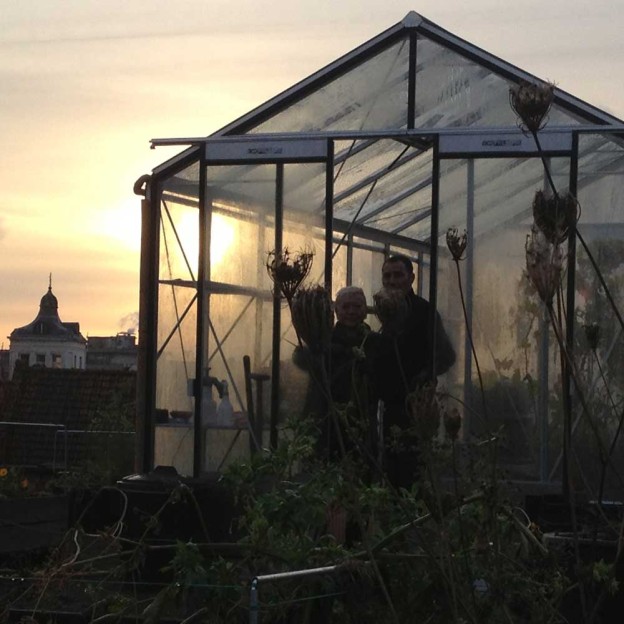For the artist, the empty rooftop is a blank canvas. It is embedded in the city and offers a perception without geographical limitations. It’s up to the artist to combine the artistic eye with scientific observation. The public has to travel to the location and has to put effort and time (= engagement) to discover the artwork.
New forms of sculpting the public space can be found in rooftop hacking and squatting, transforming rooftops into urban fields, short chain agriculture. These are interdisciplinary activities situated between art and the broader
social and political world. Their aim is to provoke a change. It are forms of site-specific art. The natural environment as in a process of a constant change, the city layers overwritten by various urban systems: socio-political and historical but also industrial and economical systems. The work involves natural processes, but as well elements of technology.
Important is the recultivation of the land/location, the historical act of rewriting, of adding new layers, with the help of earth/art methods, DIY instruments and technology. This new world is perceived from the perspective of the 3 ecologies as stated by Guattari: social, mental and environmental. The eco-logic can be found in everydays’ life. The existence for the art world is confirmed as covered by film, audio recordings, photographs, maps, diagrams, drawings and storytelling.
Open Greens : marginal zones where culture and nature overlap and enter into a symbiotic relationship.
The project researches different bottom up approaches for designing human environments that have the stability and diversity of natural ecosystems. Integration of renewable energy systems, energy efficiency, food/gardening systems, natural building, rainwater harvesting and urban planning along with the economic, political and social policies that make sustainable living possible and practical.
The Kabinet of the OpenGreens (padma, COG and other databases) is a repository for all the documentation materials on city gardens, abandoned agricultural and industrial spaces, miniature parcs on balconies and window sills, participating in the OpenGreen project. Discover how you can expand your creative space by participating in this ecological network, studying the interactions between organisms and their environment.
